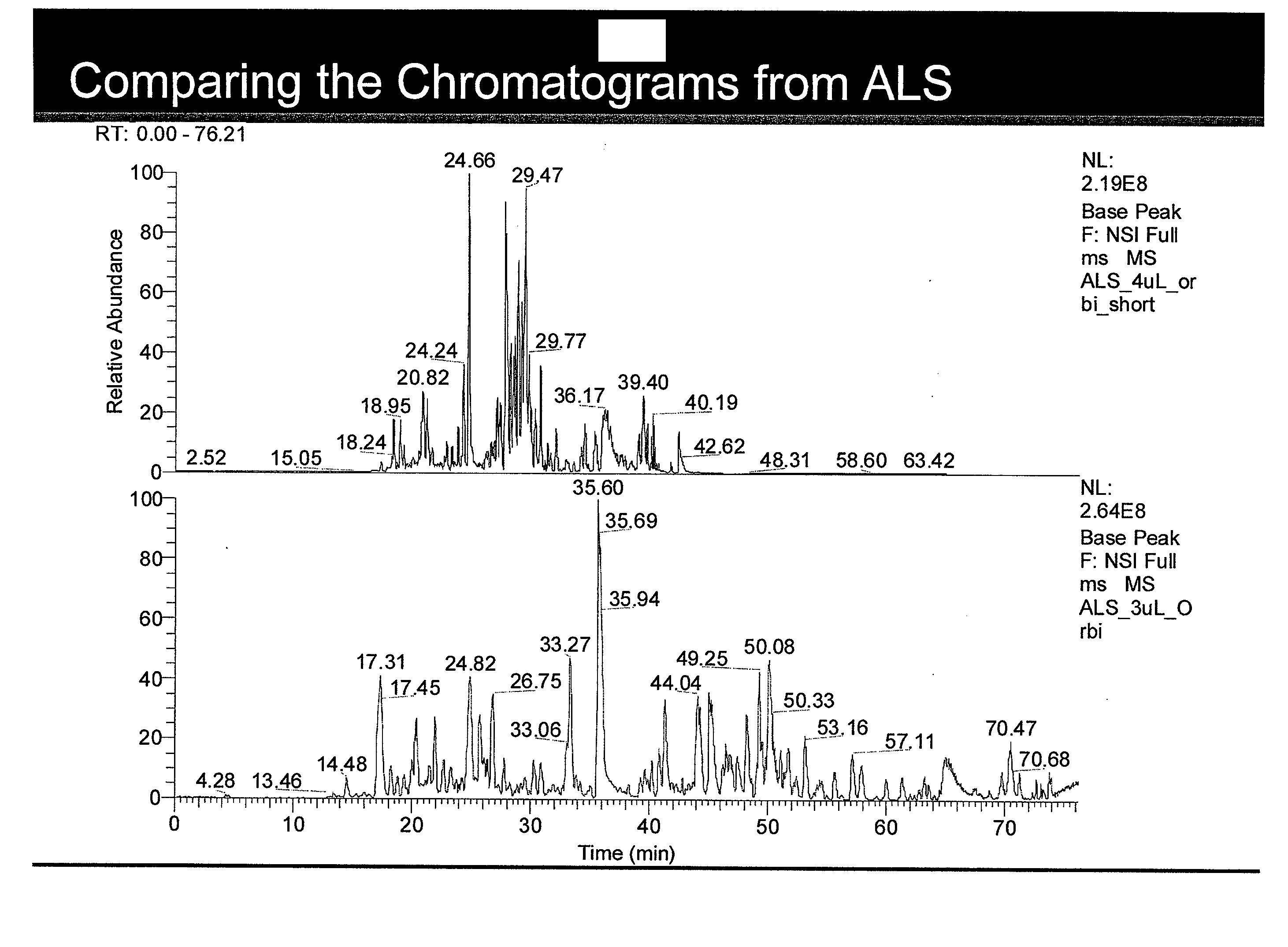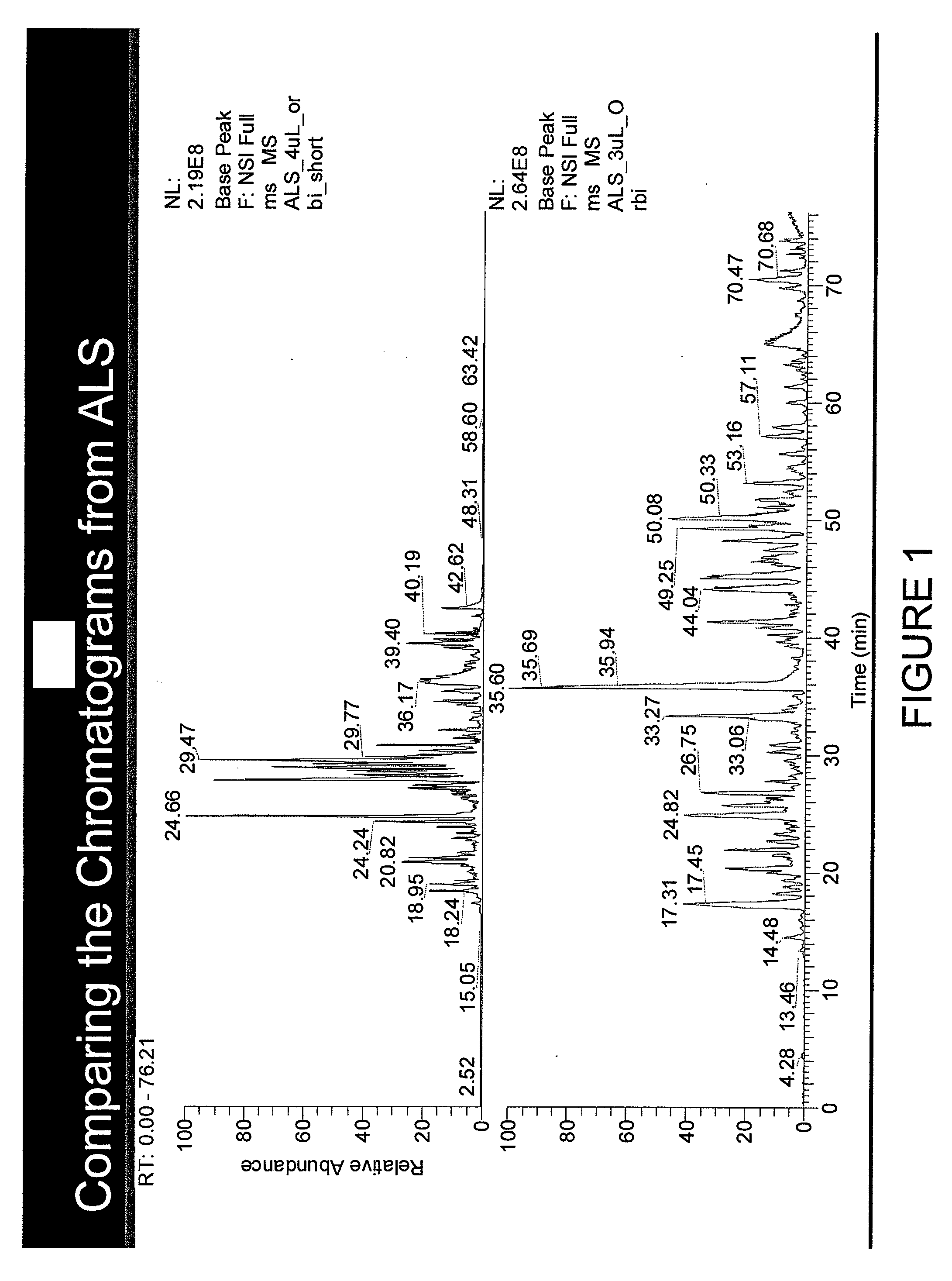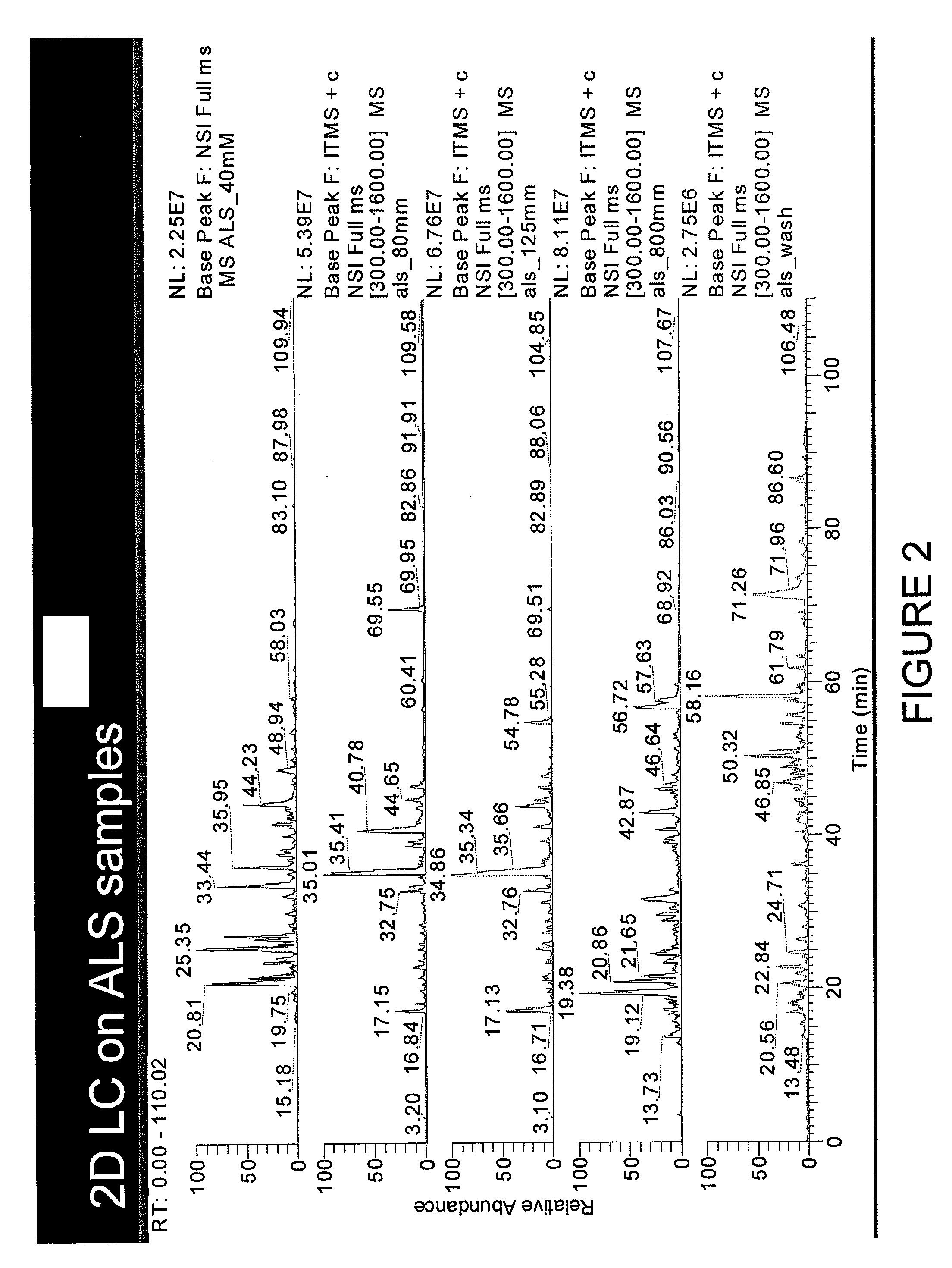Biomarkers for motor neuron disease
a technology biomarkers, applied in the field of biomarkers for motor neuron disease, can solve the problems of slow progression by a few months and inability to perform rapid diagnostic tests
- Summary
- Abstract
- Description
- Claims
- Application Information
AI Technical Summary
Problems solved by technology
Method used
Image
Examples
example 1
[0028]This example demonstrates a method of measuring peptide biomarkers of motor neuron disease.
[0029]A sample of cerebrospinal fluid (CSF) is taken from a patient diagnosed with ALS and a control sample is taken from a non-diseased control subject. The most abundant proteins are removed by affinity chromatography and the samples digested with trypsin and peptides enriched prior to liquid chromatography mass spectrometry (LC-MS / MS).
[0030]Protein first dimension liquid chromatography (1D LC) is performed on the ALS and control samples using a 3 μL injection into a ZORBAZ 300SB-C-18 column, 5 μm particle size, 5×0.3 mm trap, or a customized gradient (Picofrit, Proteopep 2, 5 μm particle size, 75 μm ID×15 μm tip×10 cm length) for analysis on the Thermo LTQ-Orbitrap. Using these gradients, base peak chromatograms of the ALS sample and control sample are generated from a full MS scan as shown in FIG. 1 (“Comparing the Chromatograms from ALS”). Peptide identification is performed on each...
example 2
[0034]This example demonstrates a method of identifying post-translational modification of peptide biomarkers of motor neuron disease.
[0035]Samples are prepared as described in Example 1 above and run in 1D and 2D LC MS / MS as described above. Post translational modification of the detected peptides is indicated through LC-MS / MS analysis using the Thermo LTQ-Orbitrap XL equipped with Electron Transfer Dissociation (ETD) to detect post-translational modifications to each identified peptide within the sample. Other methods to detect peptide post-translational modifications including purification of phosphopeptide by column chromatography and subsequent antibody detection analysis could also be utilized. In evaluating the test sample, one or more of peptides having SEQ ID NOs: 1-63 is found to have post-translational modification differing from those of the control sample.
example 3
[0036]This example demonstrates a method of diagnosing motor neuron disease.
[0037]A sample of CSF is taken from a patient suspected of having ALS. The sample is evaluated using 1D and 2D LC MS / MS as described in Examples 1 and 2, and compared to a control sample from a non-diseased subject. Based on the resulting base peak chromatograms, the sample is found to be elevated in one or more peptides having SEQ ID NOs: 1-42 and / or deficient in one or more peptides having SEQ ID NOs:43-63. Additionally, one or more of the peptides of SEQ ID NOs: 1-63 is found to have post-translational modification differing from those of the control sample. This supports a diagnosis of ALS.
PUM
| Property | Measurement | Unit |
|---|---|---|
| particle size | aaaaa | aaaaa |
| particle size | aaaaa | aaaaa |
| particle size | aaaaa | aaaaa |
Abstract
Description
Claims
Application Information
 Login to View More
Login to View More - R&D
- Intellectual Property
- Life Sciences
- Materials
- Tech Scout
- Unparalleled Data Quality
- Higher Quality Content
- 60% Fewer Hallucinations
Browse by: Latest US Patents, China's latest patents, Technical Efficacy Thesaurus, Application Domain, Technology Topic, Popular Technical Reports.
© 2025 PatSnap. All rights reserved.Legal|Privacy policy|Modern Slavery Act Transparency Statement|Sitemap|About US| Contact US: help@patsnap.com



